How to Make Your Own Reusable Mask
Learn how you can make your own mask to protect yourself and your family.
Updated April 6 2020, 11:35 a.m. ET
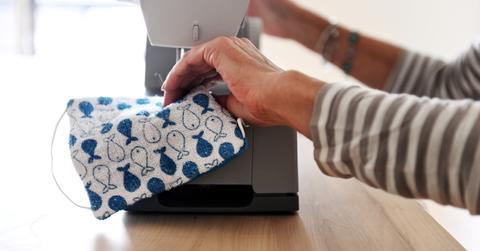
Protective masks have never been more important (or relevant) than right now. That is because the coronavirus outbreak has resulted in more and more people wanting to play it safe. Since it is thought that protective wear — also known in the medical community as PPE or personal protective equipment — can combat the spread of COVID-19, many people (doctors or otherwise) have been opting to take the extra safety measure. However, as you may have heard, COVID-19 is causing a shortage of N95 face masks for health professionals, the people who really need these masks the most. So, what can we do?
First, if you are not a healthcare professional, do not buy a N95 face mask (also known as a respirator). Why? Because you are potentially taking that mask away from someone who really needs it, like a doctor or nurse practitioner who is much more likely to come in contact with someone infected with COVID-19. While we all deserve protection, the workers on the frontlines need it the most right now. (And if you do have extra, there are plenty of organizations, like Mask Match, that are looking desperately for donations.)
Other companies — even companies that do not normally sell face masks — are now stocking protective gear in order to drive the pressure away from health care professionals who need N95 masks. So, the second thing you can do to help is purchase a mask from one of these places. Avocado Mattress is currently selling organic cotton face masks, not for profit. Various sellers on Etsy are also offering similar versions of face masks, ones that are not necessarily N95 level, but that will suffice for the average person who would get some peace of mind from a protective mask. Buy from these places first before taking a N95 face mask or surgical from a healthcare professional.
If you’d prefer not to buy, there is an option for you, too. With the shortage of masks, many people have used the lack as an opportunity to (literally) get crafty. As in, you can make your own reusable face mask at home. Now, it might not be an N95 particulate matter filtering mask, but any kind of mask will protect you from the spread of COVID-19 by sneezes, coughs, or other traditional transmissions of the virus.
And remember that according to the Centers for Disease Control and Prevention (CDC), homemade masks are considered a last resort. As always, the first line of defense is practicing social distancing by staying home to flatten the curve — though some researchers found during the SARS outbreak in 2003 that wearing a mask was even about 68 percent effective against the virus, while washing your hands at least 10 times daily was about 55 percent effective, per The New York Times.
Here is everything you need to know about making your own reusable mask at home.
What Is an N95 Face Mask?
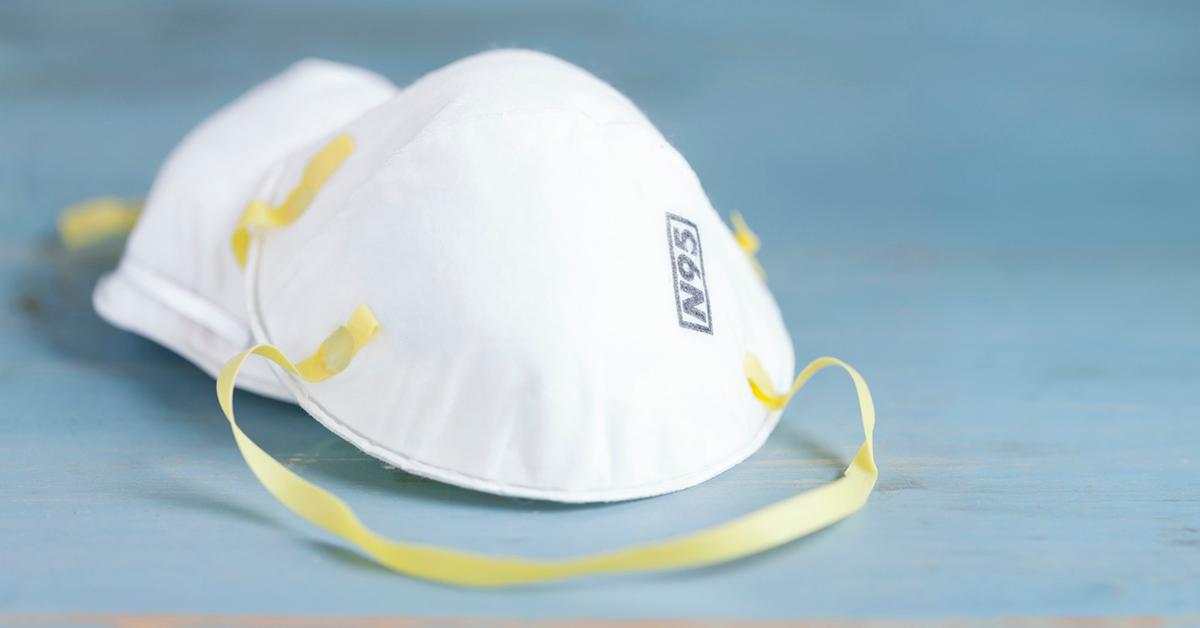
According to Forbes, N95 represents a mask that can effectively filter out 95 percent of potentially harmful particles from the air. These masks are considered medical-grade.
In order to create a mask at home that filters accordingly, you need to make sure of two main things: First, that the mask provides full coverage from your nose to your mouth and second, that you use an appropriate material.
What Should You Use to Make a Mask
You may have noticed people covering their faces with a sleeve or a bandana while they are out. While this gets an “A” for effort, it probably will not do much to stop the spread of COVID-19 (despite recommendations from the CDC that healthcare workers can use bandanas if they won’t have enough supplies at their facility).
Sundaresan Jayaraman, PhD, Kolon Professor at the Georgia Institute of Technology School of Materials Science & Engineering told Forbes, “Something like panty hose is too porous. That’s the case with many types of fabric. Even when you use several layers of fabric, it may have too many holes.”
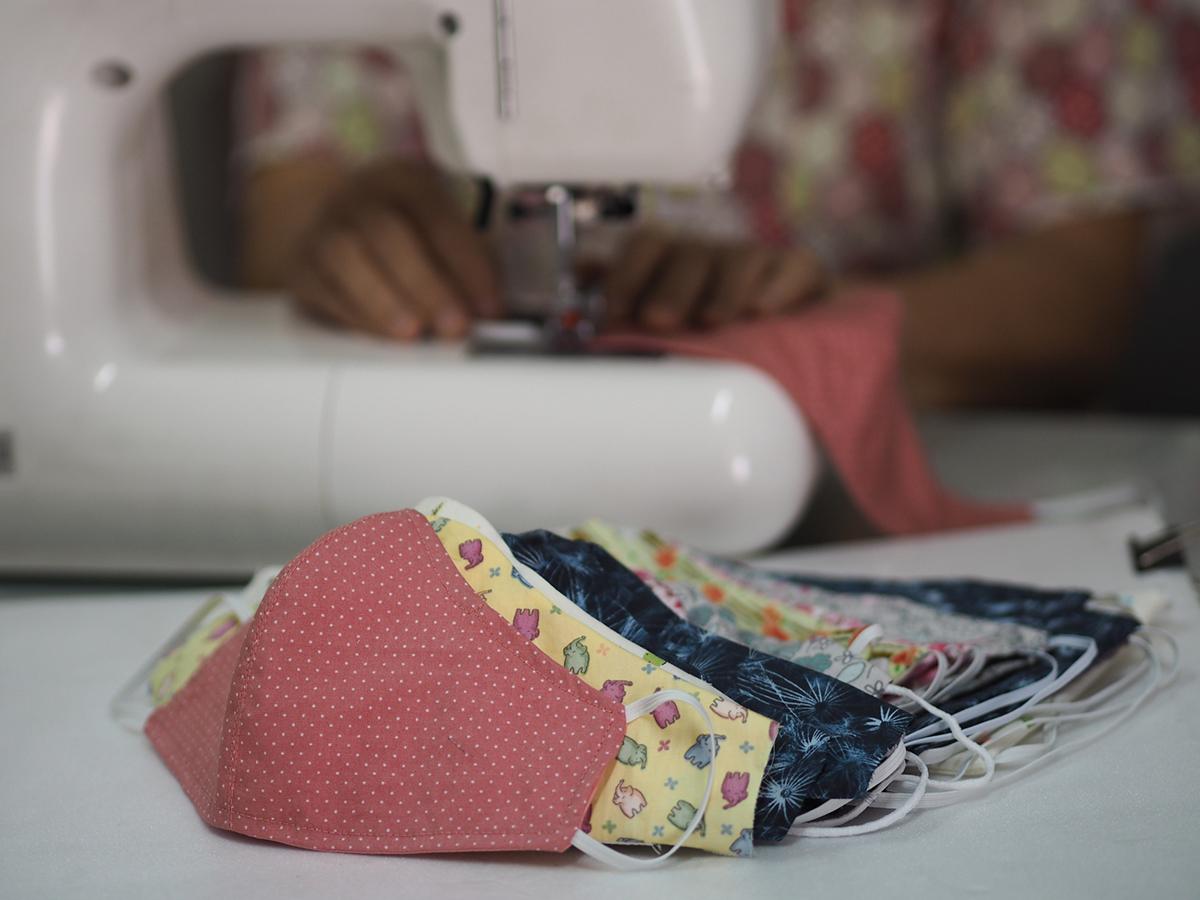
Jayaraman added that something like a handkerchief or bandana will block the entry point of both your nostrils and mouth but is only good for filtering out less than 10 percent of the air’s harmful particles.
So, in case you need a recap, here’s what won’t work:
- Panty hose
- Bandana
- Handkerchief
- T-shirt
- Saran wrap
- Sleeve
- Wool
Now that you know what won’t work, here is a list of materials that can make a semi-effective face mask at home.
- Silk
- Nylon
- Cotton
- Vacuum cleaner filter
What You’ll Need to Make a Face Mask
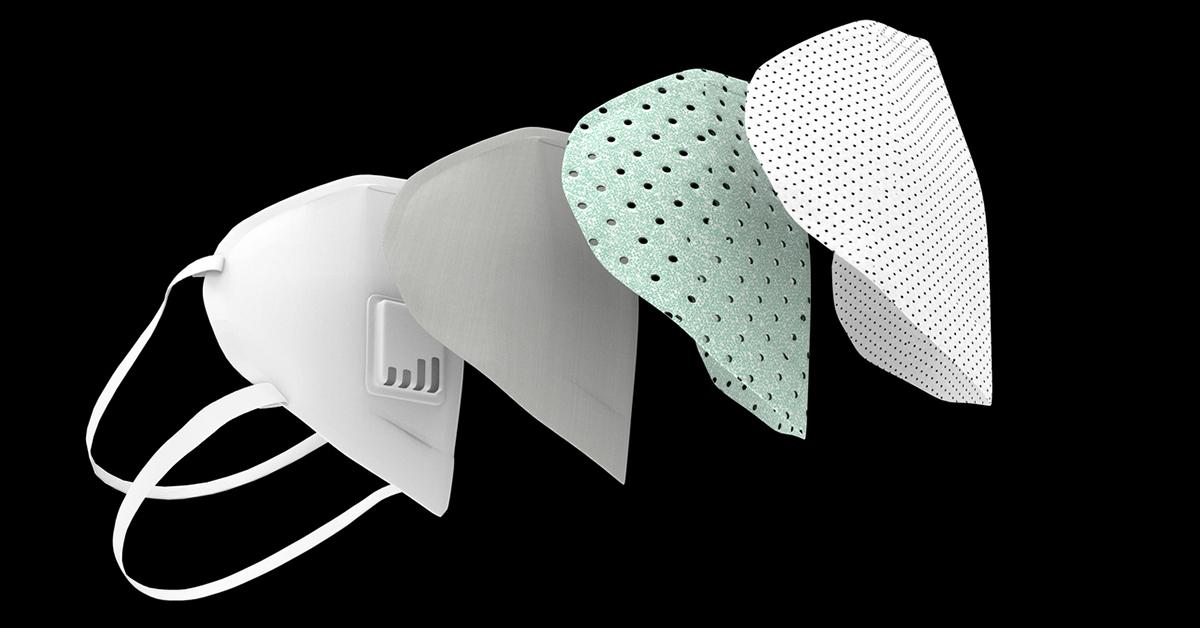
What’s key here is a non-porous material, which is why most N95 face masks are made from polypropylene, a thermoplastic polymer (AKA type of plastic) that efficiently filters out 95 percent of particles.
The IOM and Committee guidebook states, “Respirator and medical mask filters are typically composed of mats and non-woven fibrous materials, such as wool felt, fiberglass paper, or polypropylene. The material creates a tortuous path, and various mechanisms result in the adhesion of particles to the fibers without necessarily blocking the open spaces, still allowing air to easily flow across the filter.”
While polypropylene is certainly the most effective at filtering out particles, it’s totally understandable that you might not have any laying around the house. In that case, you’ll want to layer multiple materials.
According to Business Insider, three layers should do the trick as long as the outer layer is silky, the middle layer is thick, and the third (inside) layer is comfortable. Cotton is recommended for the inside, nylon or cotton for the middle layer, and a type of silk for the third layer. Six layers of gauze will also get the job done, according to Reusability of Facemasks During an Influenza Pandemic, which found some materials are better at filtering than others. For example, tight-fitting gauze (six layers of it, to be exact) has been found to reduce contamination of tuberculosis bacilli by anywhere from 90 to 95 percent.
Another material that will work — almost as effectively as a traditional N95 face mask — is the filter of a vacuum. Yes, vacuum filters are known to remove up to 99.7 percent of airborne particles, as tiny as 0.3 microns. Vacuum filters, also known as HEPA bags, work so effectively because of the way they trap contaminants: through the processes of diffusion, interception, and impaction. The particles don’t get turned away from the mask (or the vacuum filter material). Instead, they enter the fibers of the mask and get stuck there. The particles cannot make it through the arrangement of the material’s fibers, so they stay trapped, unable to infect the person wearing the mask.
You’ll also need a scissor and a sewing kit to complete your own face mask at home.
How to Make a Reusable Face Mask
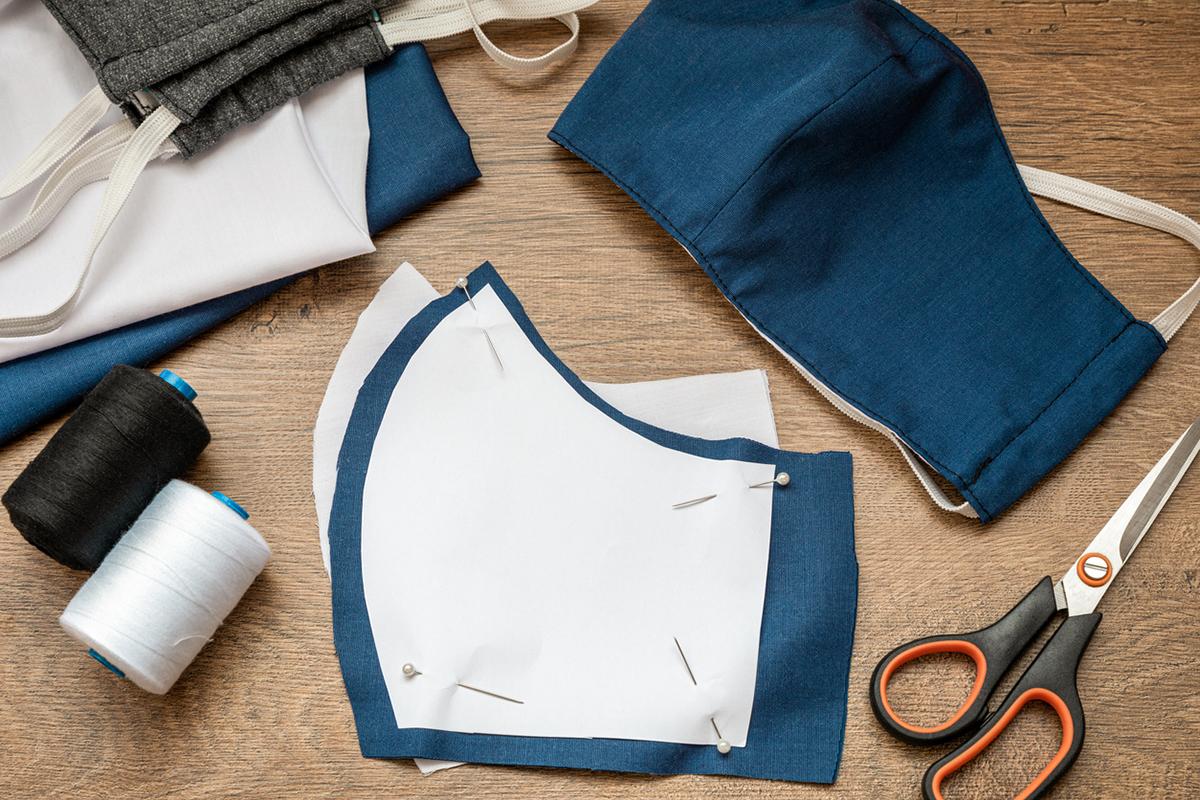
National craft store JoAnn is offering crafters a free pre-cut face mask template in the midst of COVID-19. Simply print out the template and use your scissors to cut it out.
Once you’ve done that, it’s recommended to iron the fabric you’ll be using for the mask. This could be layers of cotton, silk, nylon, or a HEPA bag from a vacuum. Next, fold the front of the fabric in half with the back facing outward. Use pins to attach the mask pattern to the fabric, then cut out the fabric in the shape of the template. When cutting, leave a ¼ inch seam on the edges. Repeat this process again for your liner fabric; remember, the liner is the inside material that touches your face most closely, so you will want to make sure it’s breathable, comfortable, and will not cause irritation or an allergic reaction. (That’s why it’s recommended to stay away from wool.) Repeat the process for your HEPA bag if you are using that material to filter particles.
Line up your two layers and pin them both together in the center. This is called the “center line.” Using either a sewing machine or a traditional thread and needle, sew the center line up (remembering to leave ¼ inch at the seam). Repeat for both fabrics.
Open both just-sewn pieces and line them up again so the back of the fabric is inside-out. Pin them together again, then sew both the sides and tops of the mask, leaving a ¼ inch seam at the edges. Now, flip the mask so the fabric is facing the correct way.
Sew the centerline of the HEPA bag, still leaving a ¼ inch seam. Now, insert the sewn HEPA bag inside the two layers of mask already sewn. Fold up those ¼ inch seams at the bottom of your mask and sew closed.
Now, all that’s left is attaching string or elastic to the sides so that you can wear the mask around your ears. You can do this by folding the edges of the mask on the sides and sewing them into place. (This must be as wide as your elastic, or the elastic will not be able to run through.) Once this is done, thread the piece of elastic upward through the just-sewn space, then thread it back down on the opposite side. Tie the elastic in the back and now it’s a wearable mask!
How to Clean a Reusable Face Mask

The whole point is that this at-home face mask is reusable. So, what does that mean for when you’ve worn it so much or gotten it dirty (or worse infected)? How do you keep it clean?
Unfortunately, all signs point to these kinds of masks not being able to be cleaned. Especially not with isopropyl alcohol, bleach, or soap and water. A study from Stanford Medicine found that using these products to clean a respirator mask decreased the efficiency of the mask’s filtration. So, sadly, instead of cleaning your mask, you’re going to have to be vigilant. Here’s what that means:
- Wash your hands before and after taking off your mask. This will help curb the spread of germs.
- Make several masks and use them in a rotation.
- Or, instead of sewing up the bottom of your mask, make it a pocket mask. That means the filter is removable and after a few days of wearing it, you can switch the filter with a new filter made of HEPA bag. (To make your face mask a pocket mask, close the bottom of the mask with a more temporary solution like masking tape or by pinning it closed.)
If you are using a pocket mask, you will have to wait at least three days to reuse a filter that has been taken out of the mask. Coronavirus can live on the surface of a HEPA bag for up to three days, so you will need to wait that long to make sure it is sterile and safe to wear and touch again.